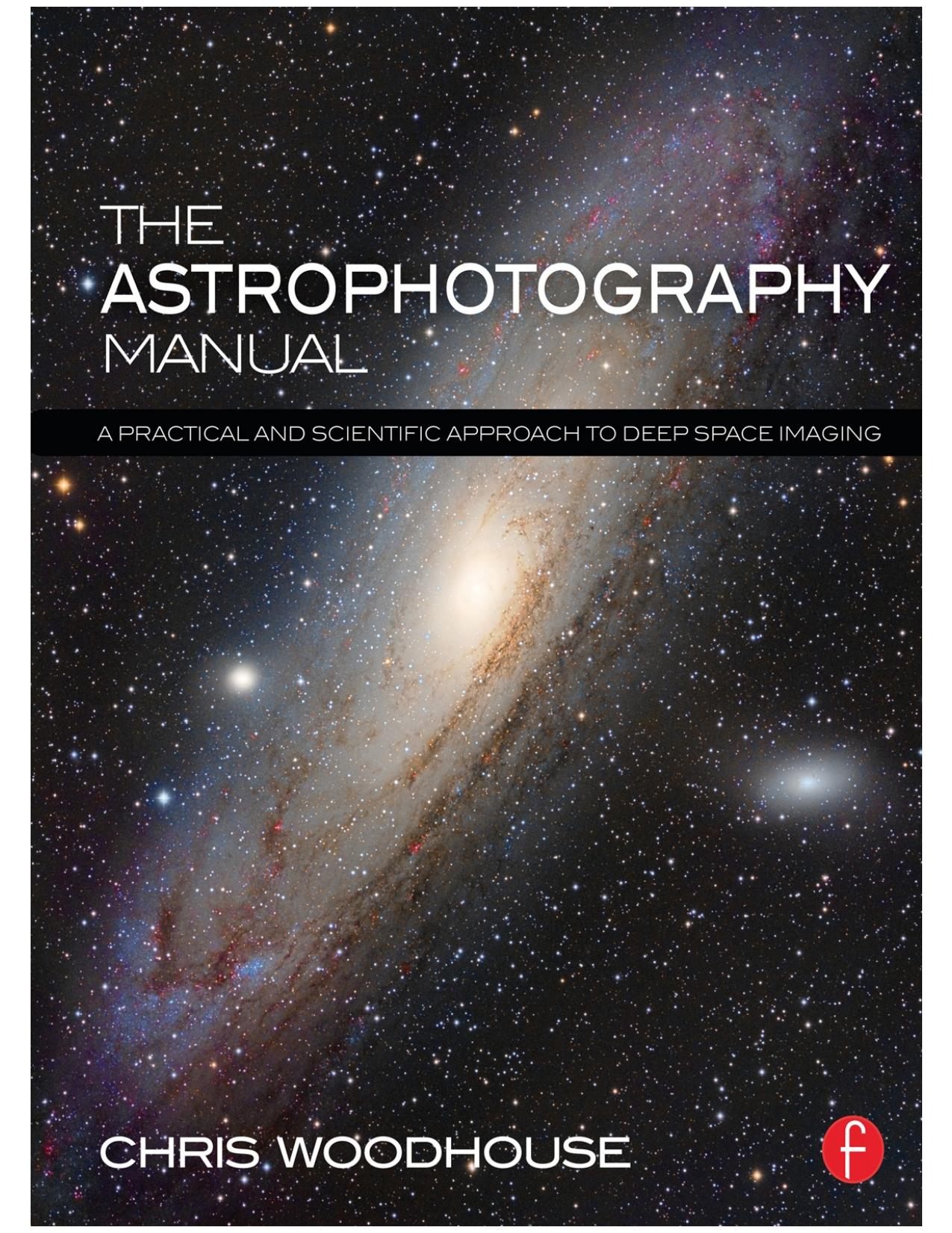The Astrophotography Manual: A Practical and Scientific Approach to Deep Space Imaging by Woodhouse Chris

Author:Woodhouse, Chris [Chris Woodhouse]
Language: eng
Format: epub, pdf
ISBN: 9781317680147
Publisher: Taylor & Francis Ltd
fig.8 Sequence Generator Pro uniquely focuses images using multiple HFD measurements from one image, improving speed and reliability. The autofocus settings dialog box has many options, not only for the number and spacing of autofocus measurements but also the triggers for autofocus, based on frame count, temperature, time or filter changes and after meridian flips. This powerful set of features allows quick and easy focus management without resorting to scripting.
Automated Controls
Focusing is one of those things that require constant monitoring. In addition to manual intervention there are a number of options, depending on the image capture software. The large integrated applications, Maxim DL and TheSkyX, do have some automated features that can enable temperature compensated focus tracking and focus shifts with filter changes. These are open loop focus changes, determined by prior evaluation but will repeat any error made in that data. They also have the capability of temporarily slewing to a medium brightness star to improve on the autofocus reliability.
Both these powerful programs have the capability For external scripting and more sophisticated control. This can determine when to autofocus based on a number of predetermined conditions. These external programs add an amazing amount of automation and remote control capability using another layer of software (and cost).
My own preferences have changed with experience and after switching software. I image entirely through APO refractors and originally captured image exposures by cycling through the LRGB filters, in turn, without using focus offsets. I had read mixed reports on the reliability of temperature compensated focusing (arising from both optical and physical changes) and did not have focus shift data for a wide temperature range for all my configurations. To cap it all, since my imaging sessions were relatively short, focusing was almost a one-time event to avoid the occasional crashes from the autofocus software and during a filter change.
This rather cavalier approach completely changed when I switched my image capture software to Sequence Generator Pro. In addition to filter offset and temperature compensating options it has simple and effective autofocus triggers that guarantee accurate focus throughout an extended imaging session without the need for external control. The reliability of my current allows for extended unattended imaging and I now acquire the required number of exposures, one filter event at a time, reducing the number of filter changes and potential focus shifts. With a refractor setup, I achieve approximate focus by moving to a pre-determined setting and then set up SGP to trigger autofocus in-between frames:
1) at the beginning of the imaging sequence
2) after a filter change (or with a prescribed offset)
3) after a temperature change of 1°C or more
4) after a meridian flip (optional for refractors but essential for reflector designs, on account of potential mirror movements)
Download
The Astrophotography Manual: A Practical and Scientific Approach to Deep Space Imaging by Woodhouse Chris.pdf
This site does not store any files on its server. We only index and link to content provided by other sites. Please contact the content providers to delete copyright contents if any and email us, we'll remove relevant links or contents immediately.
| Color | Darkroom & Processing |
| Digital Editing | Equipment |
| Flash Photography | Handbooks & Manuals |
| Lighting | Reference |
Shoot Sexy by Ryan Armbrust(17637)
Portrait Mastery in Black & White: Learn the Signature Style of a Legendary Photographer by Tim Kelly(16934)
Adobe Camera Raw For Digital Photographers Only by Rob Sheppard(16882)
Photographically Speaking: A Deeper Look at Creating Stronger Images (Eva Spring's Library) by David duChemin(16601)
Bombshells: Glamour Girls of a Lifetime by Sullivan Steve(13954)
Art Nude Photography Explained: How to Photograph and Understand Great Art Nude Images by Simon Walden(12954)
Perfect Rhythm by Jae(5307)
Pillow Thoughts by Courtney Peppernell(4191)
The Book of Joy by Dalai Lama(3884)
Good by S. Walden(3472)
The Pixar Touch by David A. Price(3347)
A Dictionary of Sociology by Unknown(2998)
Fantastic Beasts: The Crimes of Grindelwald by J. K. Rowling(2981)
Humans of New York by Brandon Stanton(2815)
Stacked Decks by The Rotenberg Collection(2796)
Read This If You Want to Take Great Photographs by Carroll Henry(2653)
On Photography by Susan Sontag(2563)
Insomniac City by Bill Hayes(2482)
Photographic Guide to the Birds of Indonesia by Strange Morten;(2476)
